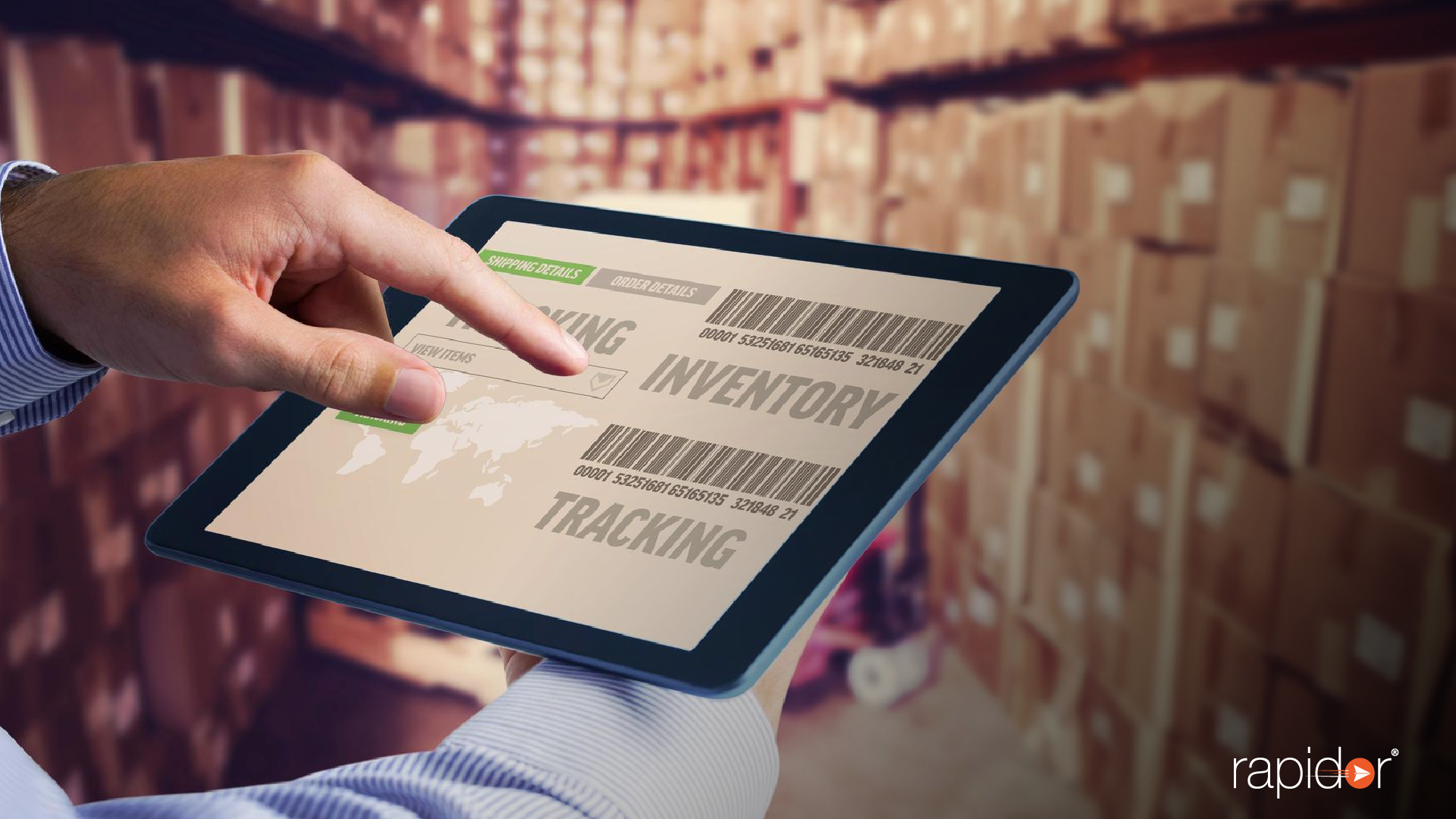Order handling is important for any business that sells, ships, or delivers things. It is a very important part of making sure customers are happy and keeping the brand’s image. In this blog, we’ll go into detail about the order management software and process, from getting a customer’s order to bringing it to their door. We’ll talk about the most important parts of this process, how it helps businesses and the tools and methods that can help you speed up the order management process. We’ll also look at how changing technologies are influencing the future of order management and show you Rapidor, the best order management solution. Come with us as we talk about everything you need to know about managing orders well.
Understanding Order Management Process
Order management is the process of getting customer orders and keeping track of them. It has several steps, such as handling the order, managing the delivery, filling the order, and coordinating the orders. Order processing includes getting the goods ready to ship, and delivery management keeps track of how the goods move from the time they are bought to the time they are delivered to the customer. Order fulfilment is the process of making sure that the goods are sent to the customers on time and to their satisfaction.
Order orchestration is about making sure that multiple orders are put together in a way that meets customer standards. The main goal of order management is to make the whole process, from getting an order to sending it to the customer, as easy as possible so that the business can be as efficient as possible and the customer is happy. Understanding the order management process is important for any business that wants to run easily and efficiently, especially in today’s market, which is dominated by e-commerce.
What is the Order Management Process, and how does it help a business?
The order management process is an important part of how a business works because it helps handle and track the flow of orders from the time they are placed until they are delivered. This process makes sure that orders are handled correctly and quickly, and that customers get the right goods at the right time. The order management process has five main steps: getting the order, processing it, delivering it, billing for it, and keeping track of the money.
The order management process is very important and can’t be stressed enough. It is a key part of lowering the risk of supply chain problems and fraud while also making customers happier in general. By putting in place a good order management system, a business can make its processes more efficient, cut down on mistakes and delays, and improve its bottom line.
Order Management Process Essential Components
Order management is a very important process that includes planning, organising, and coordinating the activities that go into fulfilling customer orders. The order management process has several important steps, such as getting the order, processing it, keeping track of the shipment, and updating the order state.
Order capture is the first step in the order management process. This is where customer orders are taken and written down. After an order is received, it goes to the processing stage, where the payment is processed and the inventory is checked to make sure that the goods needed for delivery are in stock.
Customers can keep track of their orders from the time they are shipped until they get to their final location by using shipment tracking. Lastly, order status updates let customers know how their goods are coming along at every step of the way. Understanding these key parts of the order management process can help businesses run more smoothly and give their customers better service.
Order Management Software : From Order Capture to Delivery
The process of taking, processing, and sending customer orders is called order management. Order capture is the first step in order handling. This means getting information about customers and putting in orders. The second step is order handling, which includes choosing the product, putting in the order, and sending it out. The last step is order delivery, which means getting the goods to the customers. Order management systems (OMS) are pieces of software that keep track of orders from the time they are placed until they are delivered.
Keeping track of orders is a key part of managing orders well. It makes it easy for businesses to keep track of each step of the order-processing process and makes sure that customers get their orders on time. When the order cycle is handled well, customers are happy and are more likely to buy from you again. Because of this, it’s important to have a good system that can handle the different parts of the order cycle easily and quickly.
Order Capture Stage
The first step in the order management life cycle is getting the order. At this stage, orders and data from customers are gathered from different places, such as online sites and real-world storefronts. This information is used to make a picture of the customer, which can help you spot patterns and trends. Also, the order recording stage lets you keep a record of what a customer has bought, which can be used for future marketing.
During the order capture stage, it’s important to make sure the data is entered correctly and processed quickly to avoid mistakes and shipping delays. By making this part of the order management process as efficient as possible, companies can improve customer satisfaction and make their operations run more smoothly.
Order Processing Stage
Order handling is an important part of the order management life cycle. During this time, the business gets orders from customers and turns them into something that can be sold. This is done by entering data, handling orders, and sending out orders. After an item has been processed, it is ready to be sent out.
During the delivery stage, the order is physically given to the customer. This can be done in a number of ways, such as by shipping or by picking up the item in person. Which method is used depends on the type of order and where the customer is.
Overall, order management works best when every step, from capturing the order to delivering it, is done with care and attention to detail. Organisations can build strong relationships with their customers and achieve long-term success by making sure orders are processed correctly and provided on time.
Tracking and Getting Your Order
The order management life cycle is a complicated process that starts with getting the order and moves it through different steps until it gets to the customer. Order tracking is an important part of this process because it makes sure that the order is brought on time and in good shape.
The delivery stage is when the order is sent to the customer. During this time, a number of different things can happen, such as figuring out how to get the product to the customer, checking the quality, and talking to the customer.
It’s important to keep track of the order’s progress throughout the whole process to make sure everything is correct and that shipping dates are met. This can include keeping an eye on how many items are in stock, how long it takes to ship, and any changes or updates to the order status. By doing this, businesses can improve their order management methods and give their customers better service.
Advantages of Good Order Management
Effective Order Management is one of the most important ways to improve customer service and delivery. A good order management system can handle important tasks like taking orders, processing them, and making sure they are delivered on time and correctly. It also helps businesses keep track of how much goods they have and how much money they make. With the help of a good order management system, businesses can improve their marketing by looking at the buying habits and tastes of their customers.
Also, the ability of order management systems to cut down on waste and boost productivity is a big plus for both small and large businesses. By automating and streamlining repetitive tasks, companies can focus on other parts of their operations that need attention. In short, a business needs good order management if it wants to get items to customers quickly and make sure they are happy with them.
Improving Your Order Management
Effective order management can help your business in many ways, such as by making it easier to keep track of supplies. By keeping track of your sales and where they are in the process, you can reduce the amount of stock you need to keep on hand. This will save you money and make your business run more smoothly.
Effective order management also lets you watch the progress of each order from the time it is placed to the time it is delivered. This makes sure that orders are finished on time, which makes customers happier and more likely to buy from you again. Also, if you keep track of how many customers have placed orders, you can learn a lot about how to improve your marketing and make decisions based on data to boost sales and customer involvement. Overall, putting in place a good order management system can have a big positive effect on the speed and profitability of your business.
Better communication and cooperation between field sales teams and teams in charge of inventory, purchasing, and finances
Effective order management makes it easier for field sales teams and inventory/procurement/finance teams to talk to each other and work together. Order management can help make sure that goods are delivered on time and in the right amount by streamlining the order-taking process and giving real-time visibility into inventory levels.
Effective order management can also give valuable information about sales success through the use of analytics and reporting tools, which can be used to find places to improve. This can make the business run more smoothly, make customers happier, and eventually bring in more money. Overall, good order management is an important part of running a great business.
Less money spent and more work done
Effective order management can help a business save money and work more efficiently, among other things. Businesses can save time, money, and resources by simplifying the process from taking the order to delivering it. Order management tools can keep track of orders automatically, find and stop duplicate orders, and make the best use of resources to make sure orders are filled quickly and correctly.
Order processing that is done automatically can improve speed and accuracy even more, cut down on mistakes made by people, and free up staff time for more important jobs. Effective order management also helps improve customer relationships by cutting down on wait times and making it easier for customers to talk to each other. Overall, getting a good order management system in place can help a business run more smoothly, save money, and make customers happier.
Effective Order Management Tools and Techniques
In today’s fast-paced market, any business that wants to do well must have good order handling. Order management systems (OMS) are a big part of automating the whole process, from taking orders to sending them. OMS can help companies streamline their processes and cut down on mistakes, which will improve customer satisfaction in the long run.
OMS can also help keep track of inventory and give businesses information about sales trends so they can make smart decisions about their ordering process. OMS can also help handle customer relationships by making sure orders are filled on time, which is important for keeping a good name and keeping customers. Businesses can improve their bottom line and make their processes more efficient by putting in place a good order management system.
Order Management Tools Based on Technology
Managing sales can be hard and take a lot of time, especially when done by hand. Technology-based options, on the other hand, make it easier to manage orders. Online order tracking and management systems are one example of this. These systems let you watch the progress of your orders from the time they are placed to the time they are delivered. You can also handle all of your orders in one place with these systems, which makes the whole process easier.
Other tools that use technology, such as automatic inventory management, the creation of shipping labels, and real-time data analytics, help businesses improve their order management processes by reducing mistakes and making them more accurate. Overall, using technology-based order management solutions can help companies save time, cut costs, and make customers happier by making the ordering process more streamlined and efficient.
Order Management Process Automation
For businesses to correctly track and manage their inventory, they need to have good order management. Automation of the order management process is one important tool for achieving this. This method can make the order-processing stage much more efficient and reduce the number of mistakes that are made by hand.
Automated order processing can also help businesses reduce the number of orders that need to be handled by hand. This frees up staff to work on other important tasks. It can also be set up to work with different business systems, which makes it a flexible option for many different types of organisations. Overall, automating the order management process can help businesses run more smoothly and make their customers happier.
How Order Management Will Change
With the rise of cloud-based solutions, the future of order handling looks bright. These solutions let businesses see and watch orders and shipments in real time so that customers always know the status of their orders. Order management software is getting better and allowing for smoother handling, which makes order fulfilment more efficient overall. Since customer feedback and speed of order fulfilment are becoming more important, companies are looking for new ways to please their customers.
Order handling is becoming an important part of a successful e-commerce business because it has a direct effect on how happy and loyal customers are. For a business to be successful, it needs to be able to handle orders quickly and well while keeping customers aware at every step. In the coming years, order management is likely to become even more organised and effective thanks to new technologies and ideas.
Order Management Process Technology Evolution
As businesses continue to grow and change so does the technology used in order management processes. Retailers are using more and more advanced technologies to manage orders, like GPS tracking and RFID tags. These technologies can make it much easier to get orders right and cut down on the time it takes to get them to customers. This makes customers happy and increases profits.
Also, order management systems are becoming more automated, which makes the process even more streamlined. This includes everything from automating invoicing and shipping labels to integrating with other business systems like inventory management tools.
Overall, the future of order management looks good because improvements in technology will keep making this important business function more efficient and effective.
Order Management Process Impacted by the Growth of Multi-Channel Retailing
The growth of multi-channel retailing has a lot to do with the future of order handling. Customers are buying goods through more and more different platforms, which makes it hard for retailers to keep track of all of their orders. Retailers need to come up with a system that can handle orders from different channels and different arrival times for each channel.
To reach this goal, retailers must focus on making order management systems that are quick and flexible enough to handle all of these problems. The key to success will be being able to handle orders quickly and make the customer experience the best it can be. As multi-channel shopping continues to grow, it will become more important for stores to invest in order management systems that can keep up with changing customer needs and expectations.
The best order management solution is called Rapidor.
Your entire order fulfilment process can be streamlined with the help of Rapidor, the best order management solution. The Rapidor dispatch module makes sure that your items are sent out quickly and effectively. With the delivery module, you can make sure that your customers’ goods are always sent out on time. Rapidor also has tools for making custom reports that help you see how well your business is doing. You can make custom reports to look at different parts of your order management system, such as the number of orders, how long it takes to process them, and how often they are delivered. With Rapidor’s all-encompassing approach to order management, you can improve every part of your business and make sure that your customers are happy at every step.
Conclusion
In conclusion, for a business to do well in a competitive market, the order management process must work well. From taking orders to sending them, every part of the order management life cycle is important for making sure customers are happy and the business does well. Investing in tools and techniques like technology-based solutions and process automation can help streamline the order management process, lowering costs, increasing efficiency, and improving inventory management. At Rapidor, we have the best order management solution to help you keep track of your orders from the time they are placed until they are delivered. Get in touch with us today to find out more about how we can help you improve your order management process.


